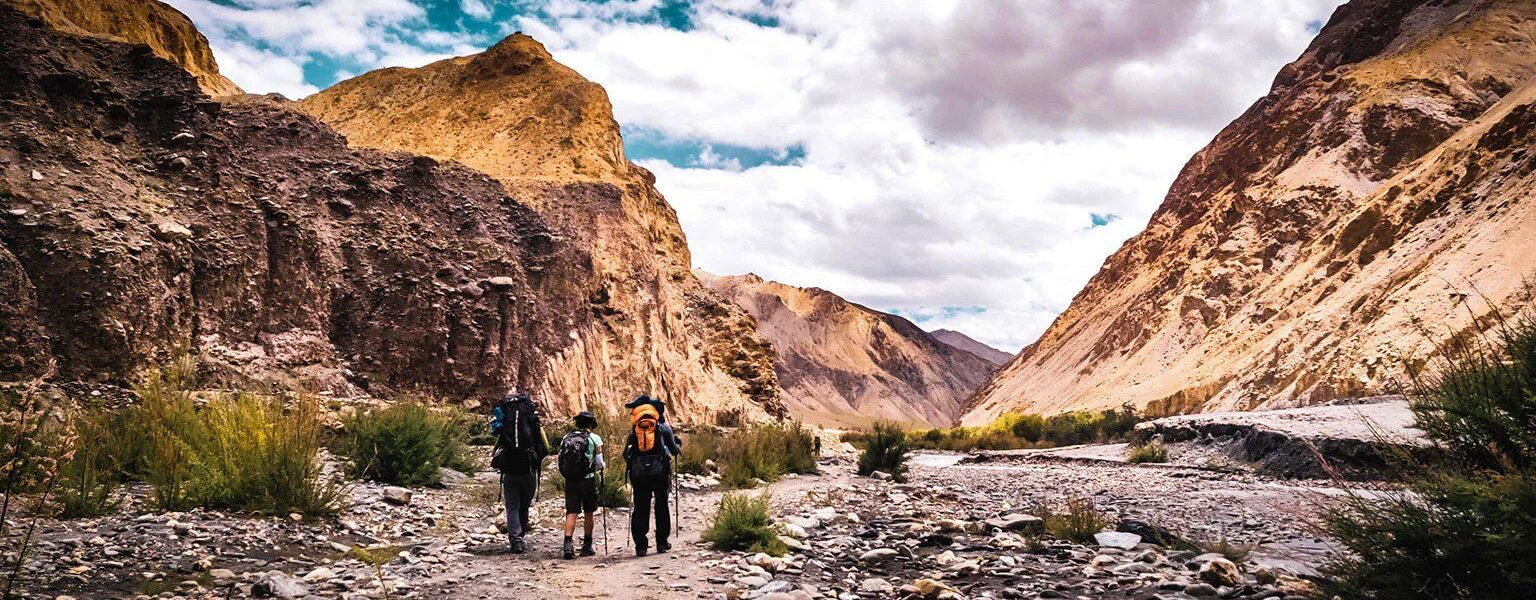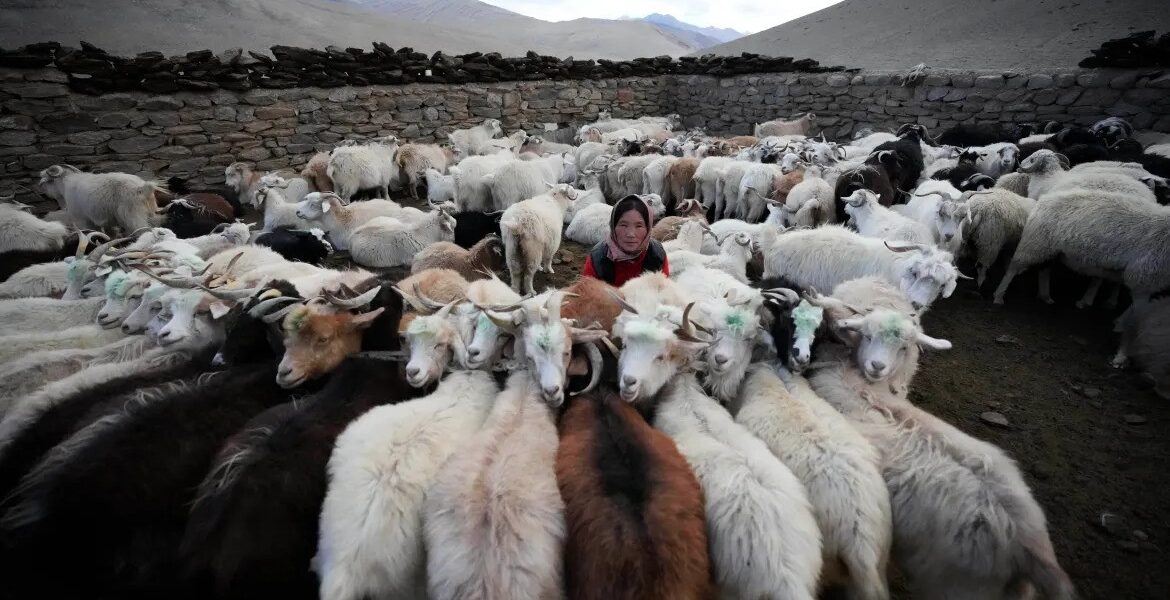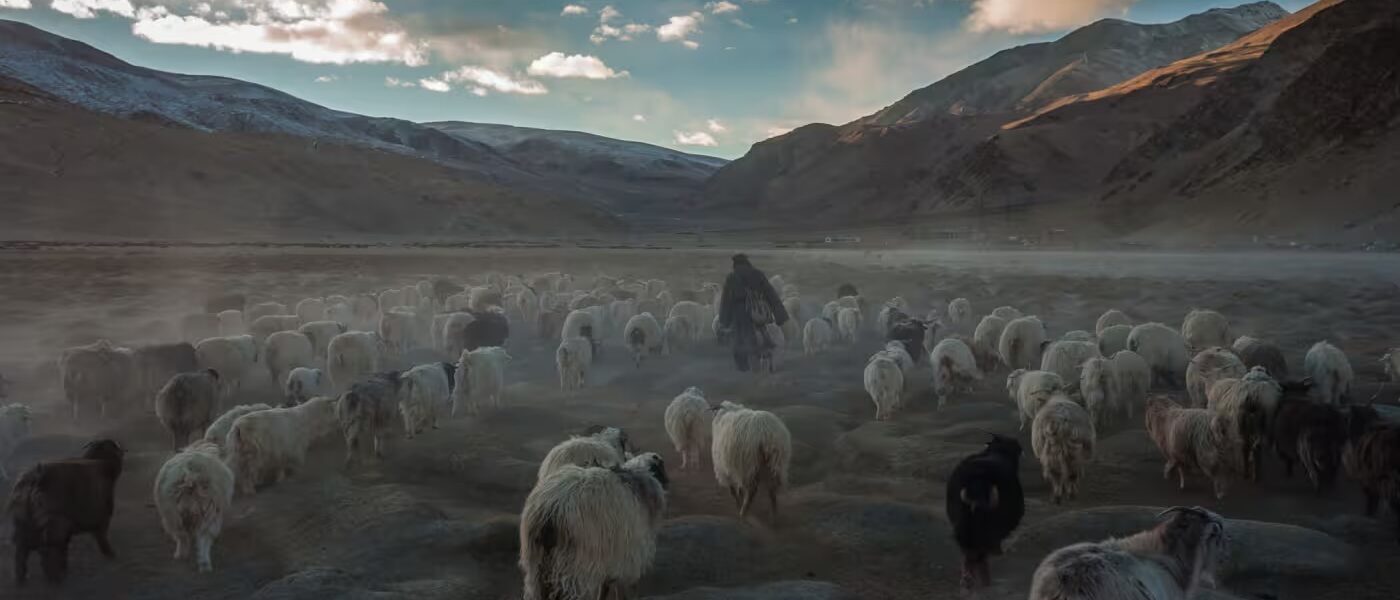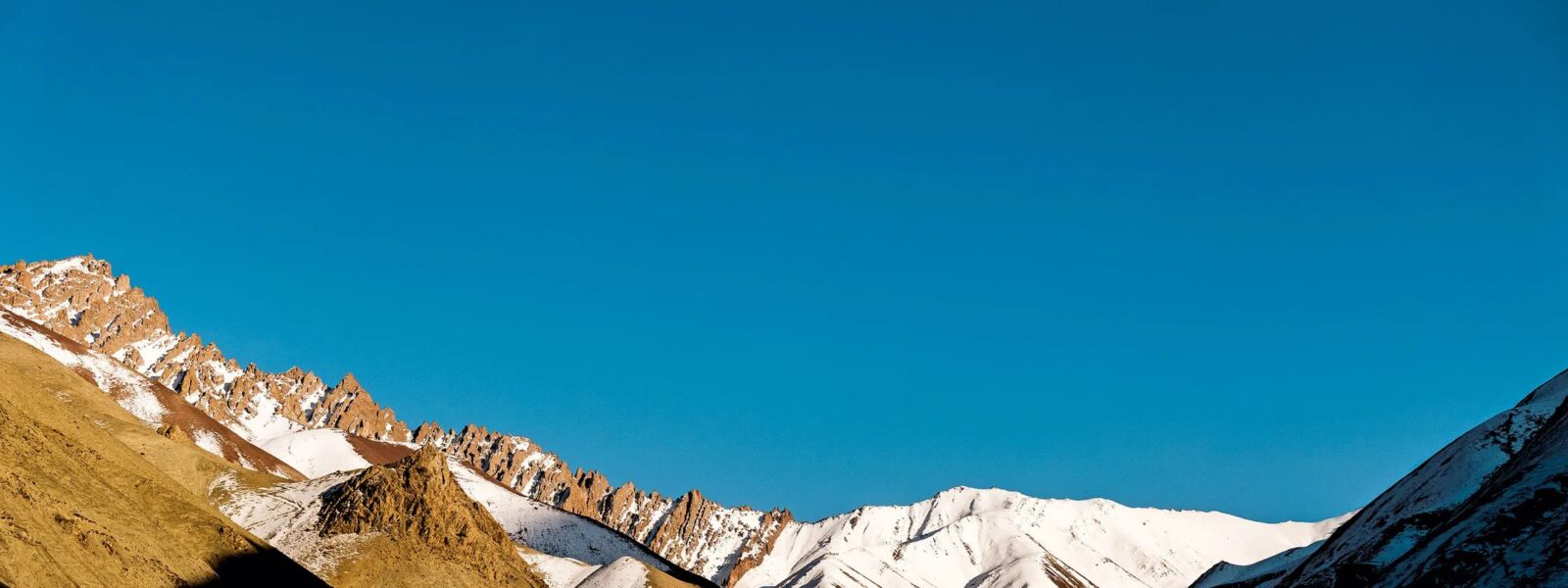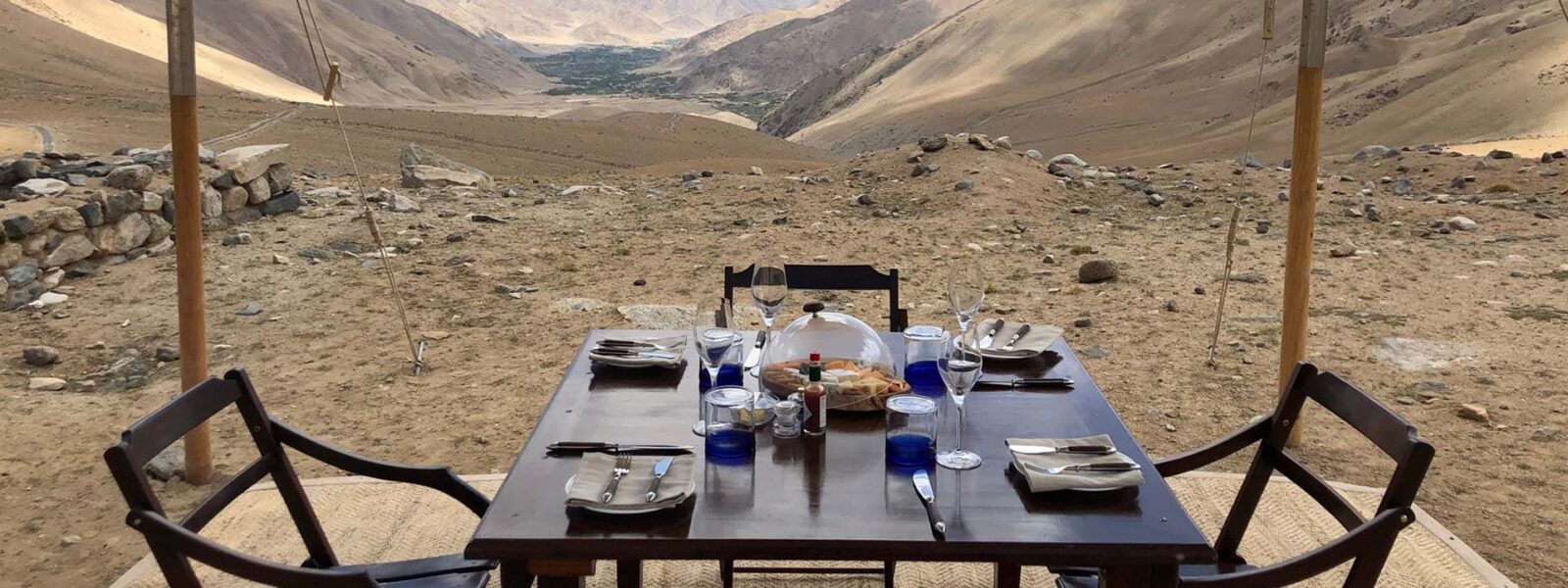A Trail Less Traveled, A Voice Less Heard
The first silence I noticed in Ladakh wasn’t the absence of cars. It was the absence of hurry. That deep, alpine quiet—so unlike the hum of trekking hotspots like Nepal’s Everest corridor or the chatter along Peru’s Inca Trail—settled around me like a second skin. It had taken three flights and one breathless mountain road to get here, and yet somehow, it felt like stepping out of the global conversation and into something much older.
For over a decade, I’ve consulted in regenerative tourism across the globe. From Bhutan’s Gross National Happiness model to the rapidly warming valleys of Patagonia and the carefully rationed Milford Track in New Zealand, I’ve walked trails that have been loved almost too much. But Ladakh? Ladakh is something else. It whispers instead of shouts, invites instead of sells. And in that, I believe it may hold answers to some of the questions we’ve stopped asking about what travel is supposed to mean.
This journey began not as a travel project, but as a pause. A moment between contracts, between hemispheres. But as I moved through the high-altitude lanes of Leh, up into the sun-burnished valleys of Zanskar, and slept in homes where apricot trees brush the windows and monasteries loom like sentinels, the realization grew sharper: Ladakh doesn’t just deserve to be compared to the world’s iconic treks—it demands to be seen through a different lens entirely.
Let’s be clear: trekking in Ladakh is not for everyone. The altitude is real, the terrain is raw, and the infrastructure, while growing, is nowhere near as developed as the polished circuits of Annapurna or the classic lodges of Torres del Paine. But therein lies its strength. In an era where nearly every “hidden gem” has been mined, geo-tagged, and algorithmically fed back to us, Ladakh stands apart. Remote. Reflective. Real.
This column is an invitation—not just to visit Ladakh, but to rethink how we value trekking experiences across the world. I will walk you through its valleys and ridgelines, comparing it to the greats: Everest Base Camp, the Inca Trail, the Snowman Trek, and beyond. But I’ll also ask: What do we really seek when we lace up our boots and step into the mountains? Is it challenge, silence, culture, or something else entirely?
What if the next evolution of adventure isn’t about going higher or farther—but going deeper?

Trekking as Global Currency — How We Measure ‘Adventure’ Today
Everest, Inca, Annapurna — Tourism Over Time
For decades, the act of trekking has served as a kind of passport stamp for the adventurous soul. A summit. A selfie. A story. From the snow-laced stairways of Nepal’s Everest Base Camp to the high-altitude stonework of Peru’s Inca Trail, these places have become icons not just for their natural grandeur—but for what they represent. Accomplishment. Endurance. Belonging to a global community of wanderers.
Yet when I walked the EBC route five years ago, I found myself wondering: how many footfalls before a path becomes a product? Nearly 55,000 trekkers attempted the Everest Base Camp trek in 2023 alone. In Peru, the Inca Trail’s limited 25,000 permits per year still struggle to protect its fragile archaeology from overuse. The Annapurna Circuit, once a rugged, weekslong pilgrimage, is now shadowed by roads, motorbikes, and lodges with cappuccino machines.
These treks still offer profound beauty. But they are no longer solitary. And that changes something fundamental. Because in our pursuit of the world’s “top 10 hikes,” we may have traded something quietly essential for something globally searchable.
The Metrics That Matter
In the tourism industry, we count everything. Arrivals. Room nights. Spend per guest. But how do we measure what trekking gives—or takes—from a place? As a regenerative tourism consultant, I often ask: What if we tracked “silence preserved per visitor” instead of only rupees or dollars spent? What if adventure was measured in presence, not likes?
Let’s reimagine our metrics:
- Elevation vs. Isolation: Ladakh’s treks may not have Everest’s brand recognition, but they offer a far deeper sense of solitude. In five days along the Rumtse to Tso Moriri route, I saw more blue sheep than humans.
- Bucket-list vs. Transformation: Where most iconic trails deliver on spectacle, Ladakh offers introspection. You leave not just with photos, but a new rhythm of breath.
- Noise per capita vs. Silence per capita: In Zanskar, I walked for six hours without hearing a single mechanical sound—something unthinkable on the over-loved trails of the Alps or the Rockies.
This isn’t to diminish the world’s legendary trails. They have earned their fame, and rightly so. But in an era where even Iceland’s Highlands are overflowing, we must begin asking different questions. Not only about where we go—but how we affect what we find.
And so, we arrive at Ladakh. A place still balanced on the edge of possibility. The question is not whether it can match the grandeur of Everest or the mystique of Machu Picchu. The question is whether it can resist becoming them.
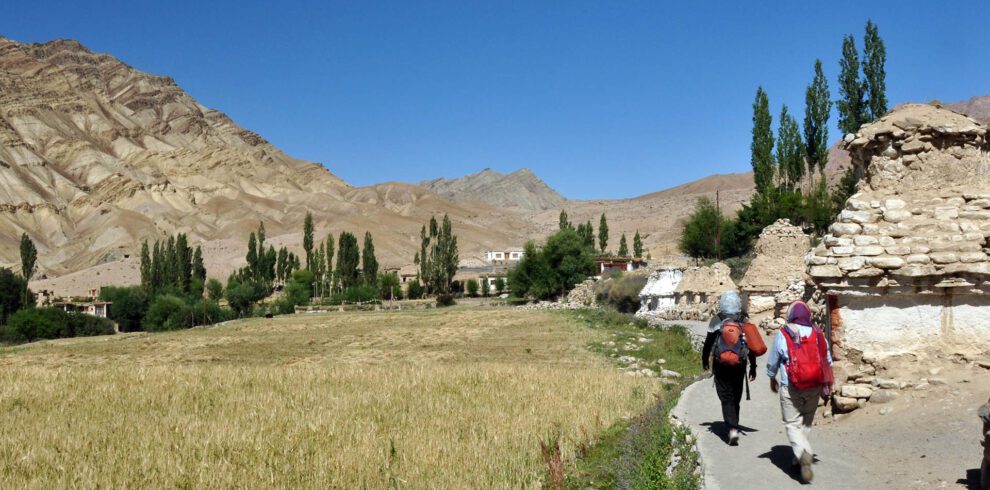
The Soul of the Trail — What Sets Ladakh Apart
Cultural Contact Zones at High Altitude
In many of the world’s great trekking destinations, the trail exists beside the culture—not within it. You pass through towns, stop at lodges, take photos of temples. But in Ladakh, the trail is the culture. Every bend in the path seems to lead not just to a new landscape, but to a living archive of stories, prayers, and traditions whispered through the wind-sculpted stones.
During a homestay in Skiu, deep in the Markha Valley, I helped churn yak butter under the gaze of family portraits faded by sun and incense. The next morning, I trekked past a tiny gompa where a boy monk no older than twelve invited me to tea. These weren’t curated moments for tourists. They were everyday gestures of hospitality. In Ladakh, trekking is not an escape from civilization—it is a pilgrimage through it.
In contrast, the Inca Trail leads to a single, dazzling destination. Everest Base Camp climaxes at a viewpoint. But in Ladakh, meaning accumulates slowly. The monasteries you pass—Hemis, Phugtal, Lamayuru—are not ruins or museums. They breathe. Chant. Endure. And so does the culture that built them.
Terrain of Stillness — The Sound of Wind in the Himalayas
Ladakh’s landscapes demand a different kind of attention. They do not shout. They do not beg to be photographed. They wait. The cold desert of this trans-Himalayan plateau is stripped of the lush drama that defines the Andes or the Southern Alps. Here, beauty is found in geological silence—the curve of an ancient riverbed, the echo of boots in a dry gorge, the haunting flight of a lammergeier above.
I remember one afternoon near Nimaling. The sun was still high, yet everything around me glowed as if lit from within. Not a sound, save the thrum of wind and the distant jangle of a dzomo’s bell. No voices. No roads. No signal. Just presence. And it struck me—this is what so many trekkers chase without knowing: the rarest terrain of all, the inner one.
Infrastructure vs. Integrity
One of Ladakh’s most defining characteristics is also what keeps it off the average hiker’s radar: its rawness. Trails are often unmarked. River crossings can shift overnight. Wooden bridges tilt and creak. Mobile coverage disappears hours outside of Leh. But what may seem like inconvenience is, in fact, protection. The absence of mass infrastructure keeps the experience intimate.
Compare this with New Zealand’s Milford Track, where Department of Conservation huts are reserved months in advance, and trails are carefully maintained for thousands of hikers each season. Or Patagonia, where CONAF trail rangers manage checkpoints and restrict movement during fire season. These systems are necessary in high-traffic zones. But they also signal a loss of spontaneity.
In Ladakh, you still get lost—in the best way. Not in danger, but in wonder. In space. In the open-endedness of a trail that doesn’t assume anything about what you want to find.
And perhaps that’s what sets it apart: the soul of Ladakh’s trails lies not in what they promise, but in what they allow you to ask.

Comparing Iconic Treks — A Table of Contrasts
To compare Ladakh’s treks with the world’s most iconic routes is not to rank them, but to reveal what we often forget to value. Each of these journeys—whether carved into the Andes or braided through the Alps—tells a different story about how humans meet mountains. But for travelers seeking something quieter, less measured by metrics and more by meaning, Ladakh offers something that many of these destinations have lost: space for solitude, and space for self.
Below is a comparative framework that doesn’t just highlight logistics, but asks: where does the soul of the trek live?
| Region | Trek | Difficulty | Cultural Immersion | Crowds | Cost (USD) | Altitude Max | Uniqueness Index |
|---|---|---|---|---|---|---|---|
| Nepal | Everest Base Camp | Moderate | Moderate | High | $1,200 | 5,364 m | ★★★☆☆ |
| Peru | Inca Trail | Moderate | High | High | $700 | 4,215 m | ★★★★☆ |
| Bhutan | Snowman Trek | Extreme | High | Low | $3,000+ | 5,320 m | ★★★★★ |
| New Zealand | Milford Track | Easy | Low | High | $450 | 1,154 m | ★★★☆☆ |
| India (Ladakh) | Markha Valley / Zanskar | Moderate–Hard | Very High | Low | $400–$800 | 5,200+ m | ★★★★★ |
It’s easy to be seduced by marketing gloss or Instagram views. But what this table reveals is that Ladakh’s trails offer a rare trifecta: altitude, authenticity, and emptiness. While other regions manage tourism growth with permits and paved access, Ladakh remains open—sometimes inconveniently so. But that’s exactly why it matters.
If you’re a European traveler tired of over-trafficked passes and looking for a trek that speaks in whispers instead of headlines, Ladakh might not just be a choice. It might be the answer.
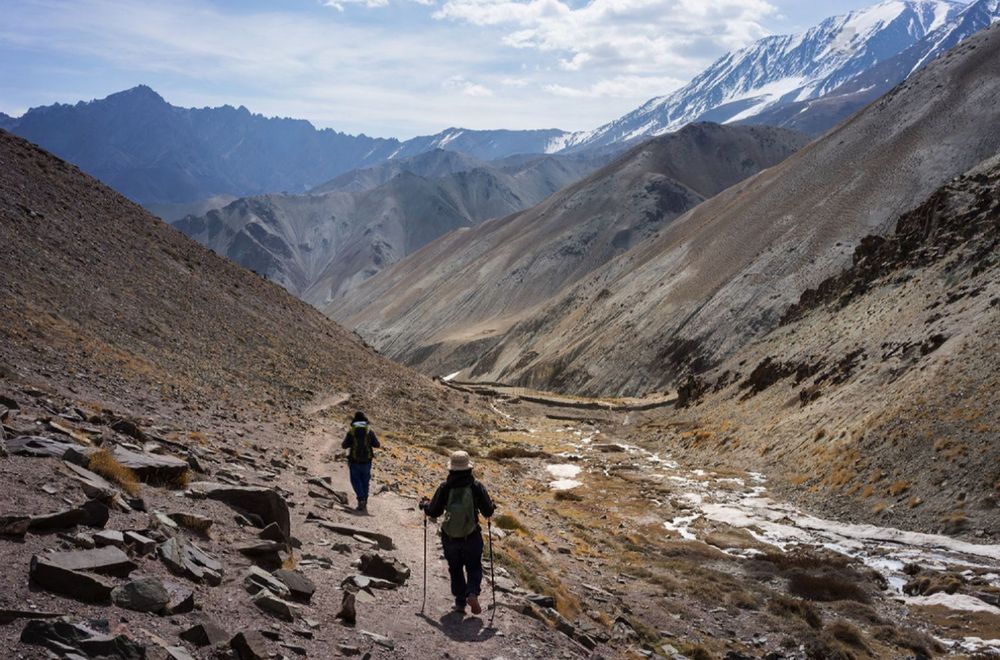
Regenerative Possibility — What Ladakh Must Learn from the World
Controlled Growth vs. Uncontrolled Fame
Bhutan has long held the world’s attention for its radical simplicity: a high-value, low-volume tourism model anchored by a daily visitor fee. It’s not a barrier—it’s a filter. In 2023, visitors to Bhutan paid a $100 Sustainable Development Fee per day, funding education, conservation, and community infrastructure. As a result, its trails remain sacred, its villages intact, its wilderness genuinely wild.
In contrast, Ladakh is standing at a precarious edge. Its doors are wide open. Trekkers, motorcyclists, influencers, and spiritual seekers arrive in growing waves, drawn by the idea of the Himalayas untouched. And yet, that very influx is what threatens to touch it beyond repair. What will happen when Ladakh becomes a hashtag, rather than a homeland?
European visitors, especially those who have witnessed the overtourism crisis in Venice, the Balearic Islands, or the Dolomites, know how fragile cultural ecosystems can be. It’s time Ladakh begins to plan not just for growth—but for guardianship. The models exist. Bhutan. Iceland. Costa Rica. Each took different roads to preserve what made them unique. Ladakh must do the same—before it’s forced to.
Certification and Trail Ethics
In New Zealand, trekkers are not just tourists—they are participants in a conservation agreement. The Department of Conservation (DOC) regulates who enters, when, and how. Trails are meticulously maintained. Bookings are capped. Rangers brief every hiker. And more importantly, hikers are taught not just the route, but the responsibility.
In Chile’s Torres del Paine, there are checkpoints at sector entrances. In Switzerland, trails are zoned to prevent erosion and wildlife disruption. These aren’t constraints. They are conversations. They say: “This place matters. So must your presence here.”
Ladakh could lead South Asia in creating something similar. Imagine a “Himalayan Trekker’s Code”—a brief but meaningful guide given to every visitor. It wouldn’t require a police force. Just intention. Just education. Leave no trace. Respect silence. Ask before photographing. Pack out what you pack in. Support local guides. Walk gently, for the mountain remembers.
Too often, destinations build infrastructure to handle impact. But regenerative travel asks something braver: Can we create systems that reduce the impact in the first place? This is where Ladakh’s future lies—not in more, but in better. In return, visitors won’t just have a trek. They’ll have a relationship.
And perhaps, for the European adventurer increasingly conscious of climate, culture, and consequence, this is the true luxury of the future: to walk in wild places and know they will remain wild after you’ve gone.
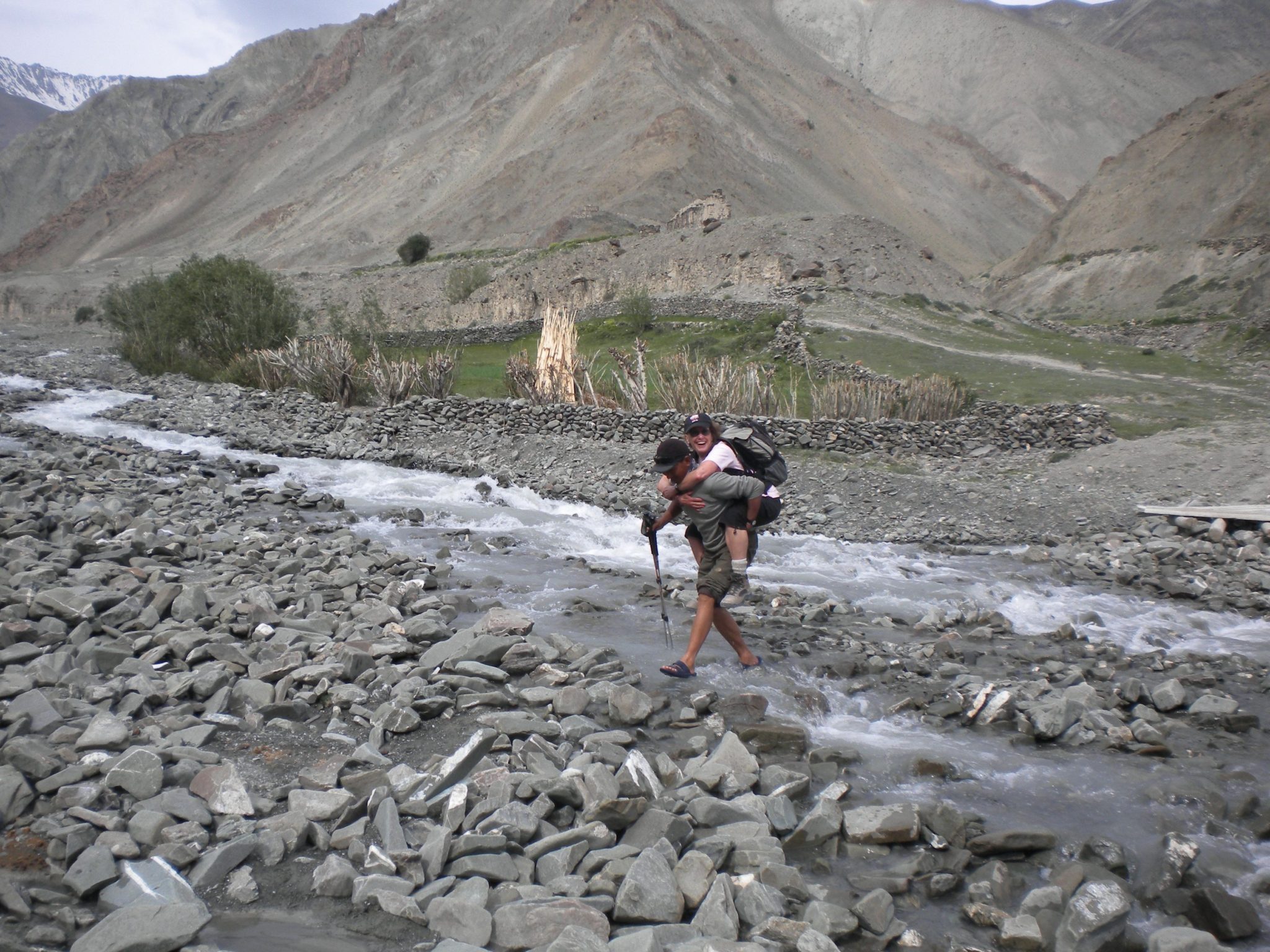
A Hiker’s Dilemma — Choosing Meaning Over Milestone
Somewhere between the ridges of Kongmaru La and the whispering tents at Nimaling, the air changed. Not just the altitude—though at over 5,200 meters it does command attention—but something subtler. I had been walking for days, sometimes with companions, often alone, and by that point, my pace had slowed not from fatigue, but from attention. The way clouds drag shadows across ochre slopes. The way the wind carries no birdsong, only the occasional whistle of marmots. The way silence has its own weather.
It was in that high plateau stillness that I realized the question wasn’t “How far have I walked?” or even “What have I seen?” but rather: “What has changed in me by walking here?”
This is the hiker’s dilemma in our time. The more the world opens, the more tightly we clutch the milestones. The passport stamp. The summit photo. The GPS track uploaded to Strava. We move fast. We count steps. But we rarely stop to ask what the experience was for.
In Europe, I often hear trekkers speak of finishing the Camino de Santiago, or crossing the GR20 in Corsica, or completing all of the Alps’ “classic” circuits. These are worthy achievements, often life-changing. But many admit to feeling something missing—not at the start, but at the end. A longing they can’t name. A hunger that kilometers alone couldn’t satisfy.
Ladakh, in contrast, offers fewer milestones and more mysteries. No famous endpoint. No widely celebrated “firsts” or “fastest known times.” What it offers instead is rare in modern travel: room for unmeasured presence. When you trek in Ladakh, you leave something behind, yes—but you also recover something. A rhythm. A breath. A way of seeing.
One morning, I sat on a ridge above Hankar as the sun broke open the sky. A woman passed with her herd of goats and greeted me with a single nod, her face weathered and kind. She did not ask where I was going. She simply acknowledged that I was here. And that was enough.
For the modern trekker—especially those from Western Europe, where trails are often crowded and curated—this kind of encounter is more than a postcard moment. It’s a recalibration. It reminds us that we are not only adventurers, but visitors. Not conquerors of peaks, but companions of landscapes.
So as you consider your next trek, ask yourself not just what you will complete, but what you will feel. Choose trails that don’t just move your legs, but shift your soul.
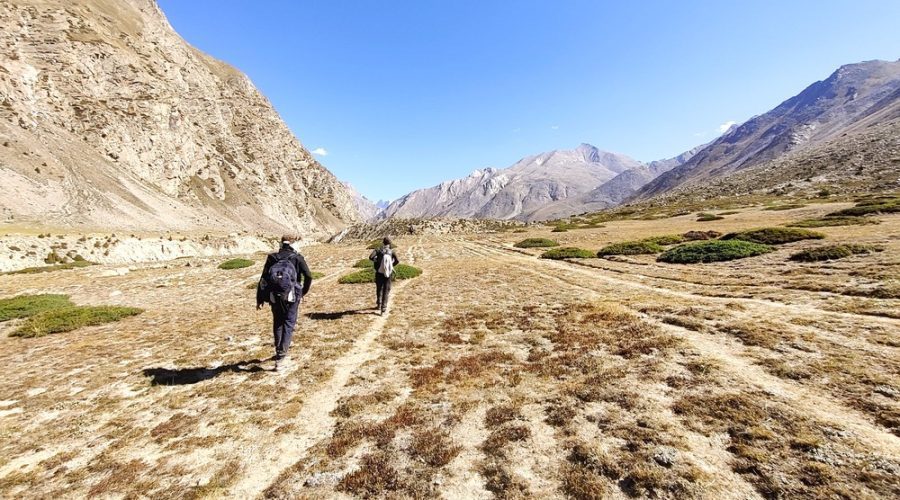
Practical Tips for Trekking in Ladakh (Without Breaking the Spell)
By now, you may be wondering: if Ladakh’s trails are so raw, so immersive, so unfiltered—how do I actually go about trekking them? This section offers practical guidance for European adventurers who seek to walk gently in these Himalayan spaces. The key, as with all good journeys, is to prepare thoroughly—but remain open to being undone by wonder.
Top Trekking Routes for First-Timers and Explorers
There is no shortage of stunning routes in Ladakh, but here are a few that balance beauty, cultural immersion, and manageable logistics:
- Markha Valley Trek: Ideal for moderate trekkers. Ancient monasteries, river crossings, and wide valleys dotted with villages. Usually 5–7 days. Leh to Chilling is a common starting point.
- Lamayuru to Chilling: For those interested in both lunar landscapes and Buddhist heritage. Passes through Wanla and Hinju.
- Rumtse to Tso Moriri: A longer, high-altitude trek for experienced hikers. Crosses multiple 5,000 m+ passes and ends at a dazzling alpine lake. 8–10 days.
- Phuktal Monastery Trek (Zanskar): For pilgrims of the heart. A shorter trek (3–4 days) with deep cultural resonance, ending at a monastery built into a cave.
Best Time to Trek
The prime season for trekking in Ladakh is late June to mid-October. July and August are the most stable weather months. September offers crisp air and golden hues in the valleys, while October brings solitude—but also cold. Avoid early June if snow still lingers on passes, and be cautious of July cloudbursts in lower areas like Kargil or Suru Valley.
Permits and Regulations
Foreign nationals require an Inner Line Permit (ILP) for certain areas (Nubra Valley, Pangong Lake, Tso Moriri, etc.). These can be arranged through travel agencies in Leh or online. For trekking into Zanskar or near the border areas, check current regulations, as they may shift with geopolitical conditions.
Guides, Gear, and Support
While Ladakh is trekkable independently by seasoned hikers, I highly recommend hiring a local guide or joining a small, community-based trek. This not only enhances safety but ensures cultural respect and economic benefit to villages along the way. Many homestay-based treks require no porters or tents—just a sleeping bag and an open mind.
For longer or more remote routes (like Rumtse to Tso Moriri or Kanji–Padum), pack animals and camp logistics are essential. Local outfitters in Leh provide gear rental, transport, and crew support.
Leave No Trace, But Leave Something Behind
In Ladakh, waste disposal is a serious issue. Carry out all non-biodegradable materials, avoid plastic packaging, and use reusable water bottles with filters or purification tablets. Respect religious sites by removing shoes, asking before photographing, and donating if staying in monastery-run accommodations.
And most of all, leave behind something intangible: gratitude, humility, reverence. These are the offerings that sustain places long after our footprints have faded.
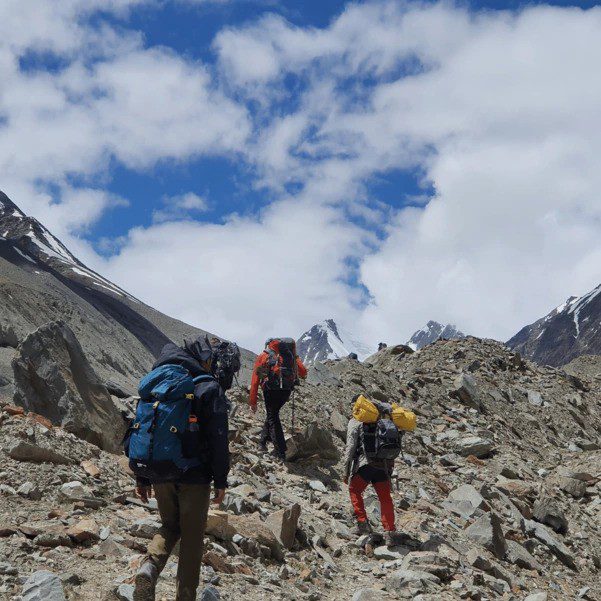
Conclusion — Walking Towards the Future
In a world where even the wildest corners of the planet are increasingly accessible, the true frontier may no longer be physical—but ethical. How do we walk through someone else’s landscape without consuming it? How do we seek beauty without breaking it? How do we pursue wonder without demanding it perform for us?
Ladakh offers no simple answers. But it does ask better questions. And perhaps that is its greatest gift.
The trails here are not crowded. The Wi-Fi is scarce. The comforts are humble. But in that stripped-back silence, there is space for something many of us—especially in fast-moving, well-connected Europe—are aching for: a return to slowness, to presence, to purpose.
This is not to say Ladakh will stay untouched. It won’t. Change is coming—some of it welcome, some of it not. But if we begin now, with consciousness and care, Ladakh can become something rare: a model for what regenerative trekking might look like in the 21st century.
Imagine a future where every traveler pauses to learn a local phrase before setting foot on a trail. Where every trekking company contributes to trail maintenance. Where every permit includes a contribution to climate resilience. Where silence is not just protected—but praised. Where spiritual landscapes are not Instagrammed—but honored.
If you are reading this from Berlin, or Bruges, or Bordeaux—know that Ladakh does not need saving. But it does need solidarity. Not in charity, but in mindset. In how we walk. In what we choose to value. In what we refuse to turn into a product.
So lace your boots, yes. But also pack curiosity. Pack reverence. Pack less.
Because in Ladakh, the less you carry, the more you’ll receive.
And when you return—not just to your city or your job or your inbox, but to the person you were before—you may find you’ve brought back something weightless and rare: a sense that the journey was never about reaching the peak, but becoming someone quiet enough to hear the mountain breathe.
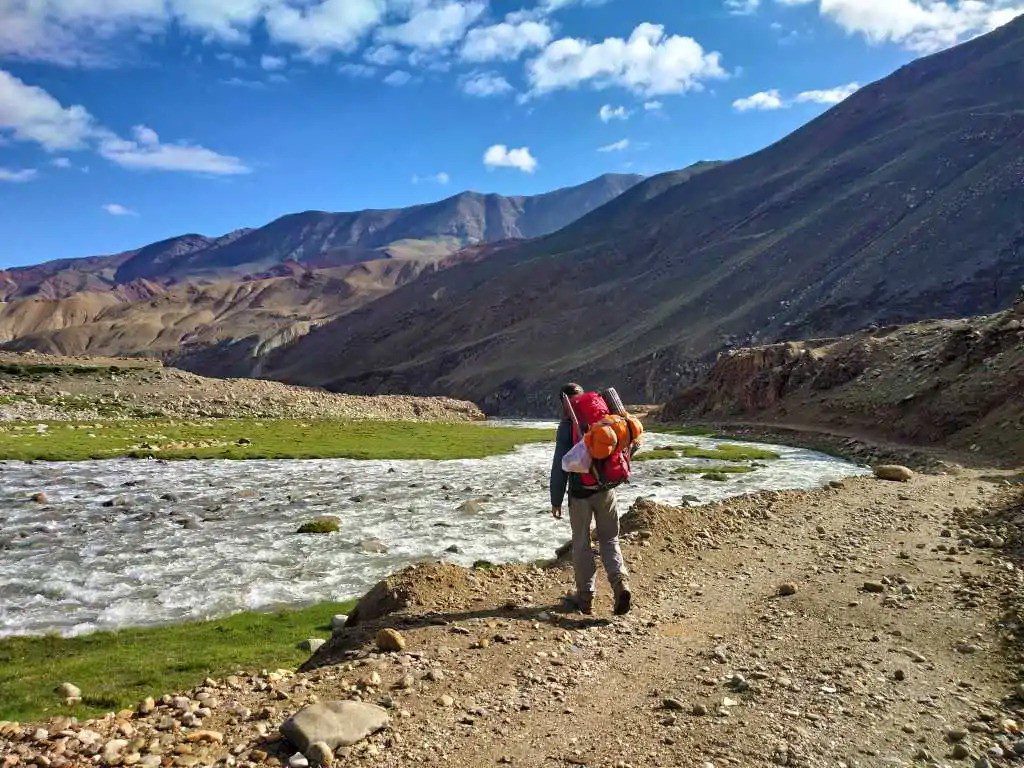
About the Author
Isla Van Doren is a regenerative tourism consultant from Utrecht, the Netherlands, currently based in the highlands outside Cusco, Peru. With over a decade of experience advising on sustainable travel models across Bhutan, Chile, and New Zealand, she brings a global perspective to every local trail.
Her writing blends data with intuition, analysis with emotion—inviting readers to rethink not just where they travel, but how. Known for asking difficult questions in beautiful ways, her work often explores the delicate balance between adventure and impact.
This was her first journey through Ladakh. What began as a quiet personal retreat soon became a mirror to everything she’d learned about tourism, place, and presence.
As she puts it: “Bhutan measures its success in Gross National Happiness. What if Ladakh measured its tourism in silence preserved per visitor?”

